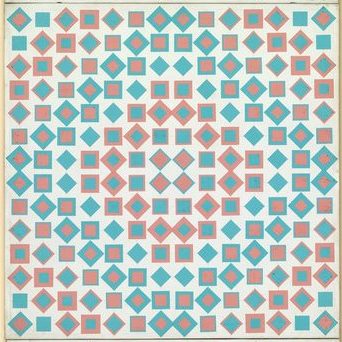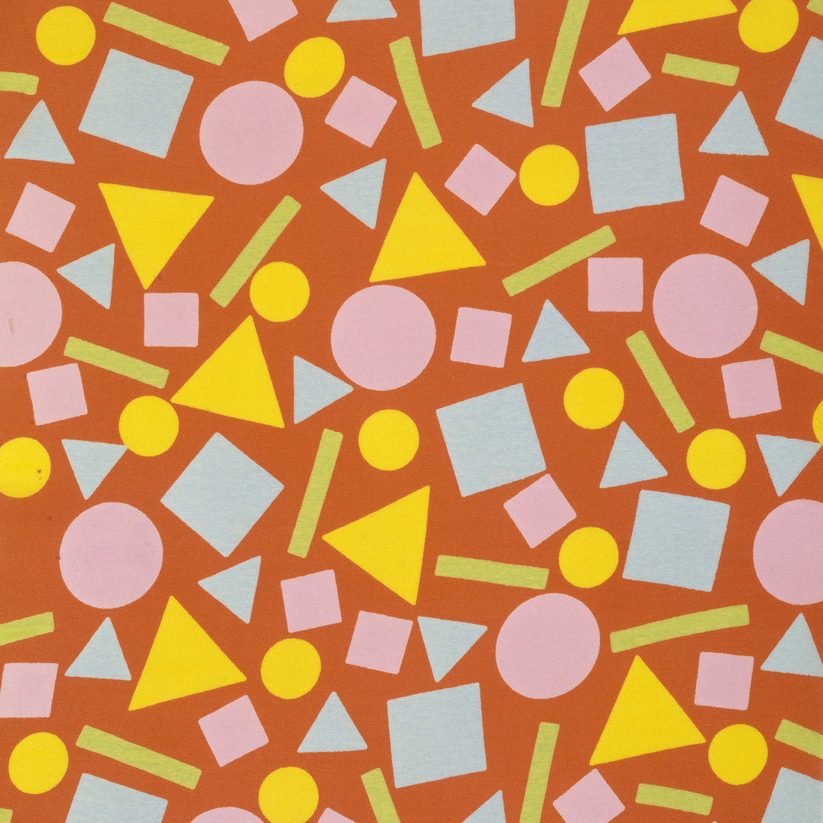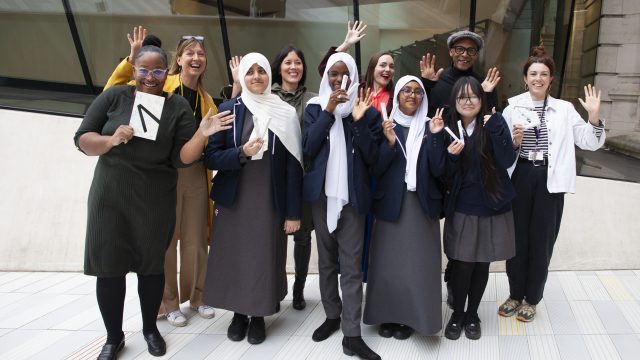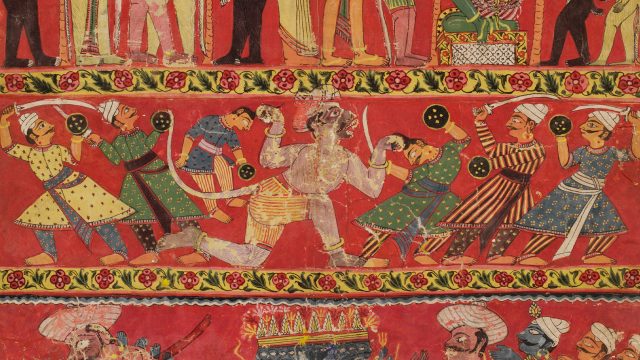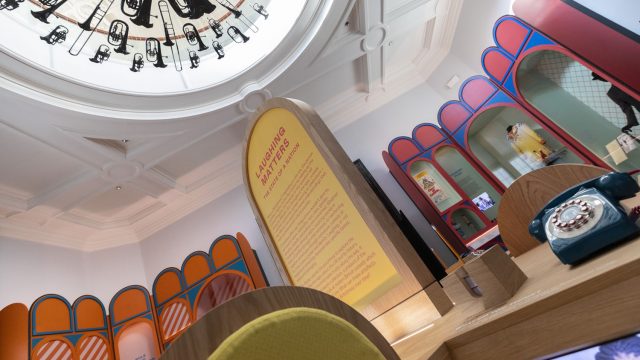Wherever you are, look around the room. What shapes can you spot? Can you see any rectangles, squares, circles or triangles?
Shapes are all around us. If you look closely at some of the things in your home, like the table or sofa, you might see they are made up of different shapes.
Have a look at this illustration created by artist Fredun Shapur. How many different shapes can you spot?
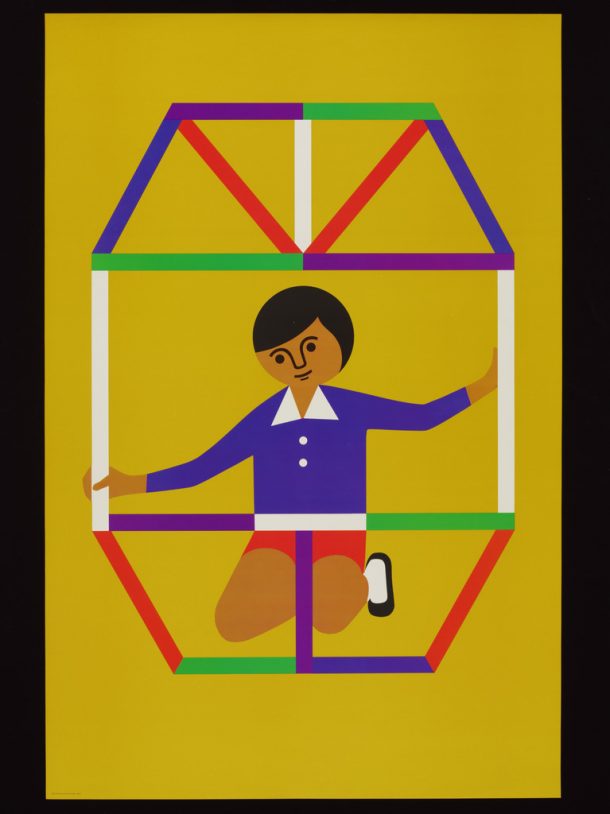
In the V&A Museum of Childhood’s new Play Gallery we will have a space for you to make structures and dens. Thinking about different shapes can help you build and create different forms. If it falls over or doesn’t work, what could you change next time? In the Play Gallery, it’s okay to make mistakes!
Today we’re going to have a go at playing with shapes with the design company HATO. If you’re aged 7+, these activities will be perfect for you and your family.
Introducing Studio HATO
Studio HATO is a design studio based in London and Hong Kong. They work with lots of people to generate new and exciting ideas.
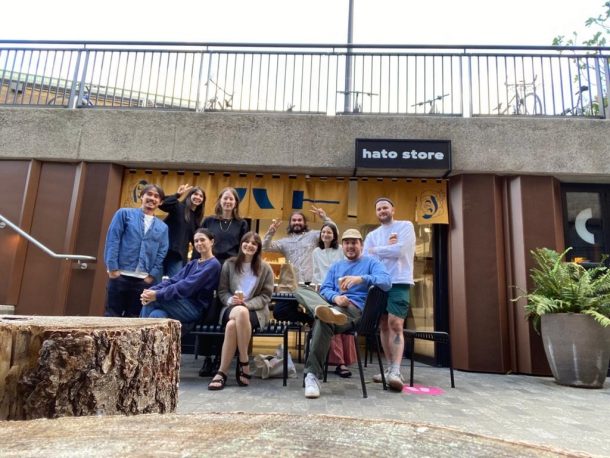
We spoke to them about their work, and they said:
PLAY is a big part of how we work at HATO. It is also a great way to tell stories and find new ways of doing things in everyday life. By allowing our imaginations to recreate shapes and colours into something else, we are transforming them into new ideas, just like recycling. We can also do this with 3D materials and objects to form a loop, reimagining and recreating things as many times as you like! This is a sustainable, fun and play-based activity that allows us to explore the world around us in new ways each time without creating waste.
Inspired by the V&A collection
In these artworks from the V&A collection, artists have used geometric shapes to create abstract patterns. In some artworks, the shapes are layered on top of each other to create a 3D effect.
- What shapes and patterns can you spot in these designs?
- Which colours have the artists used for each shape?
- In Collage by Lily Greenham (left), can you see any shapes inside another shape?
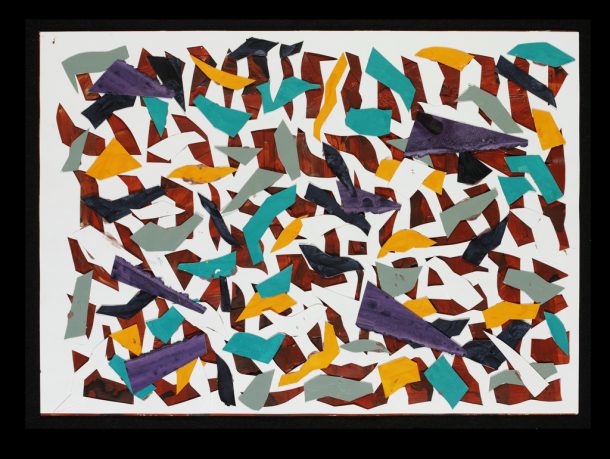
Time to get playful
Warm up: playing eye-spy with shapes.
You will need: Something to draw on (is there anything you can use in your recycling bin?), colouring pencils and a hard book to lean on.
Let’s try finding geometric shapes hidden in the real world.
You can stay where you are, or walk to somewhere new. Maybe the kitchen, garden or outside on the street?
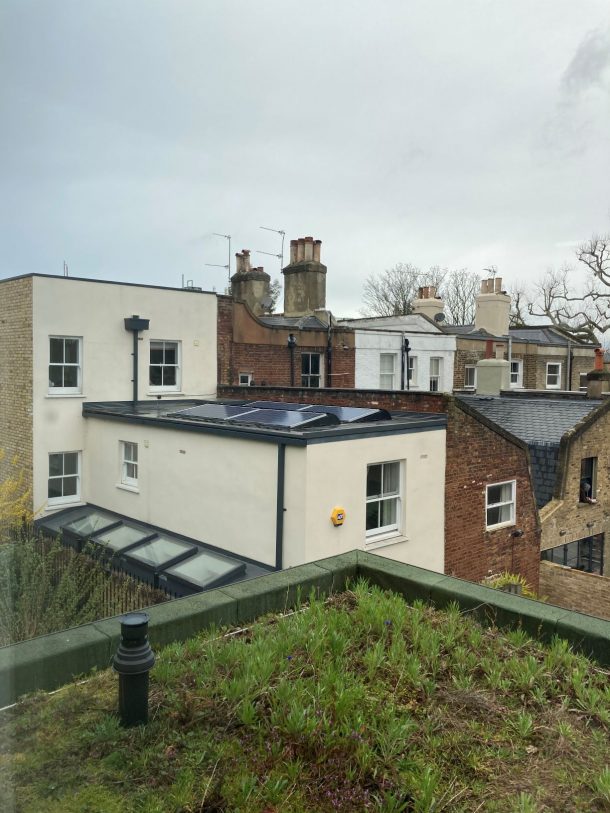
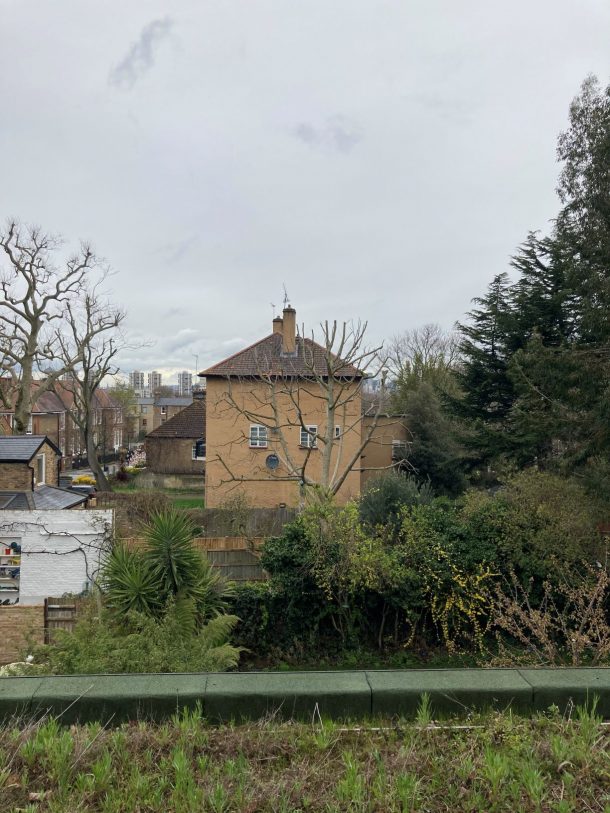
In HATO’s examples above they looked outside the window and realised there were lots of hidden geometric shapes.
- How many triangles, circles and rectangles can you spot?
- What other shapes can you see? What about diamonds, semicircles or pentagons?
Draw the shapes you spotted around you. You can give them a new colour.
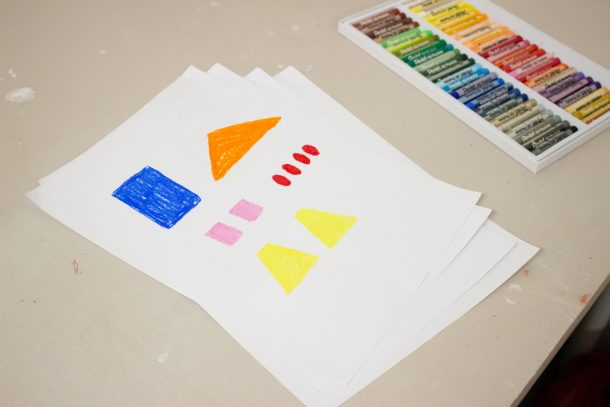
Next step: making a new picture with your geometric shapes.
You will need: Your geometric coloured shapes and a pair of scissors.
You’ve spotted and drawn the hidden shapes in your environment. Now, let’s use these shapes to construct a new picture.
Step 1: Cut out your individual geometric shapes.
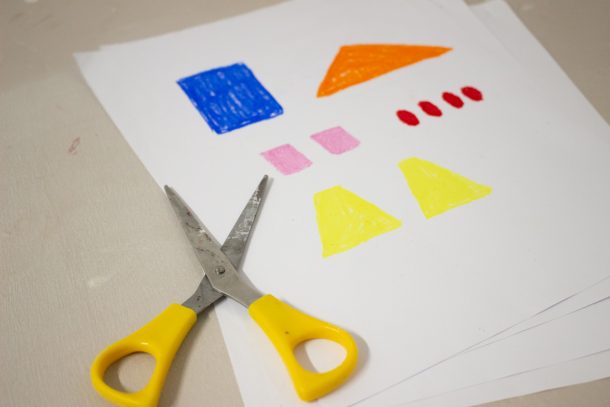
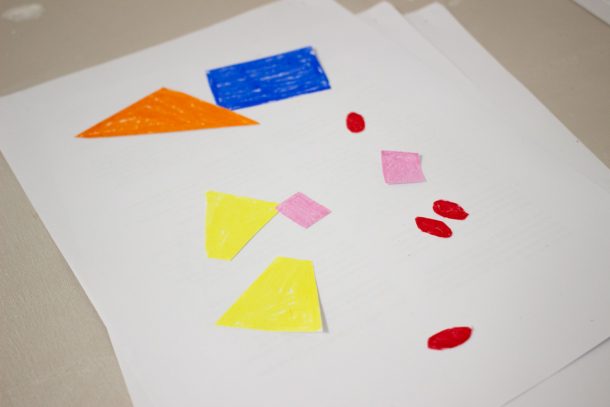
Step 2: Try playing with the cut-out shapes, and see how you can lay them out in abstract patterns. What different styles and patterns can you make with your shapes?
Step 3: Can you make a completely new object with your shapes? We discovered that ours could make a rocket car, a house and a robot, just by laying them out differently!
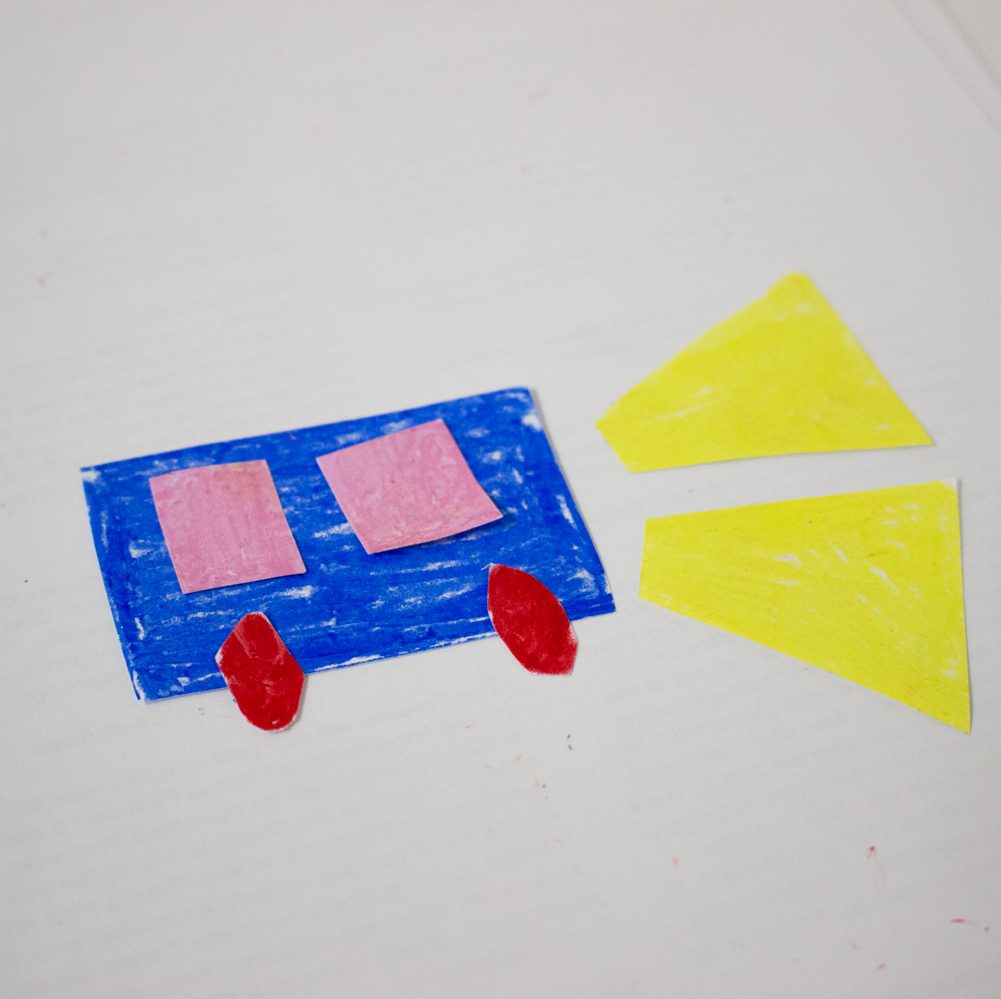
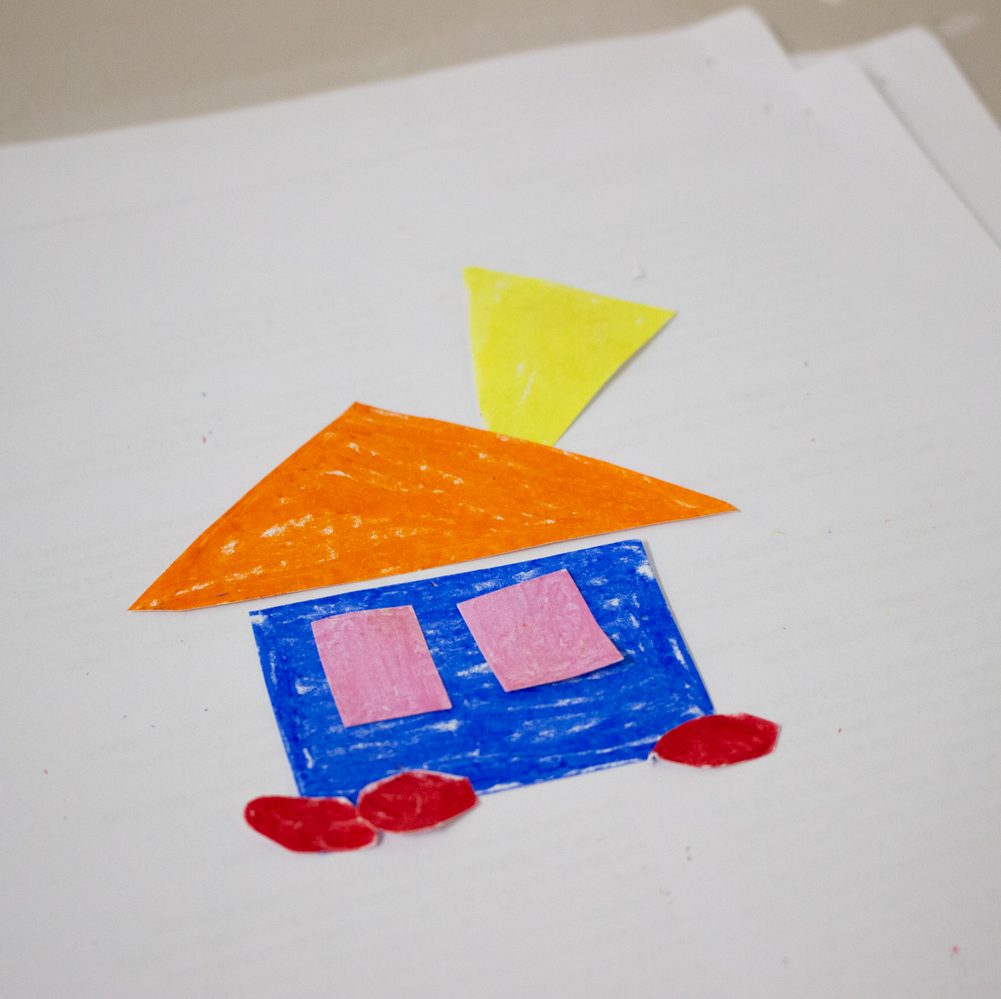
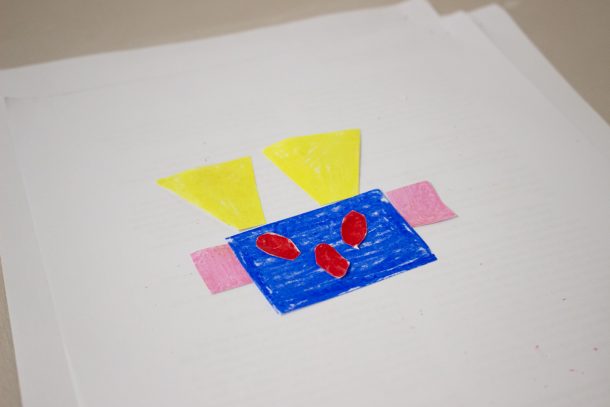
Final step: 3D to 2D to 3D!
We started off by looking at 3D landscapes and picked out 2D shapes. Then we constructed a picture. Now, let’s change this 2D picture back into a 3D structure.
You will need: Your picture, old pieces of paper, a plastic waterproof tub, warm water, blender, painting brush, paint.
Step 1: You will need to rip up your drawing. If you don’t want to rip up your masterpiece, then you can make another one or you can use paper from your recycling bin (you can ask your adults too for old paper).
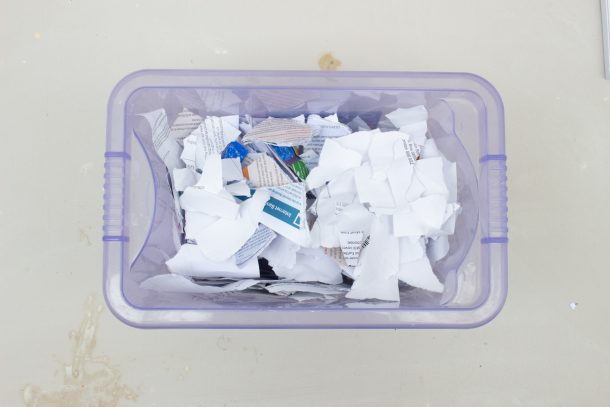
Step 2: Now you need to soak your paper strips in a tub using warm water. You will need to fill the tub so that it covers all of the paper. Leave this for 2 to 3 hours until the paper is mushy. Then mush it together with your hands.
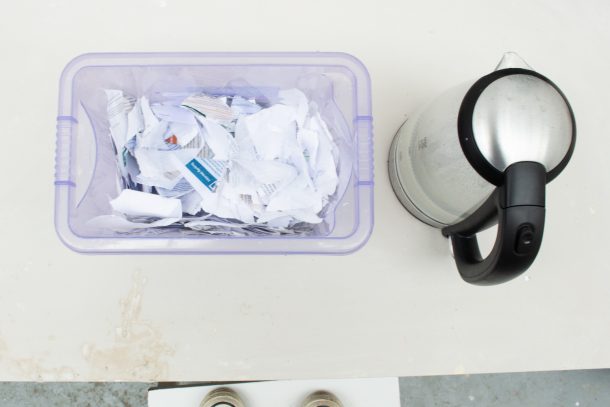
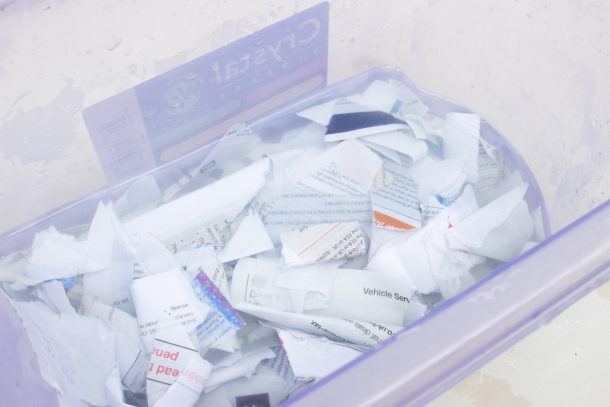

Step 3: Now blend together the mushy paper water with a small hand blender until it resembles thick rice pudding. Ask your adults for help with this.
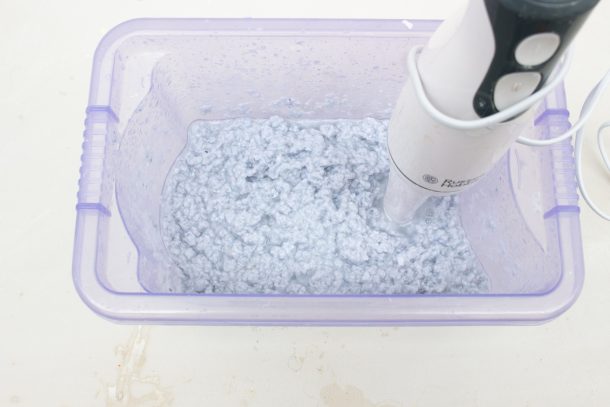
Step 4: When the paper is blended, we can start to construct our 3D shapes. Have a think about what you would like to make. Maybe they could be the geometric shapes you discovered in the first activity.
Grab a handful of the paper mush and squeeze any excess water out, forming shapes with your hands. A ball is the easiest to form, so try this first!
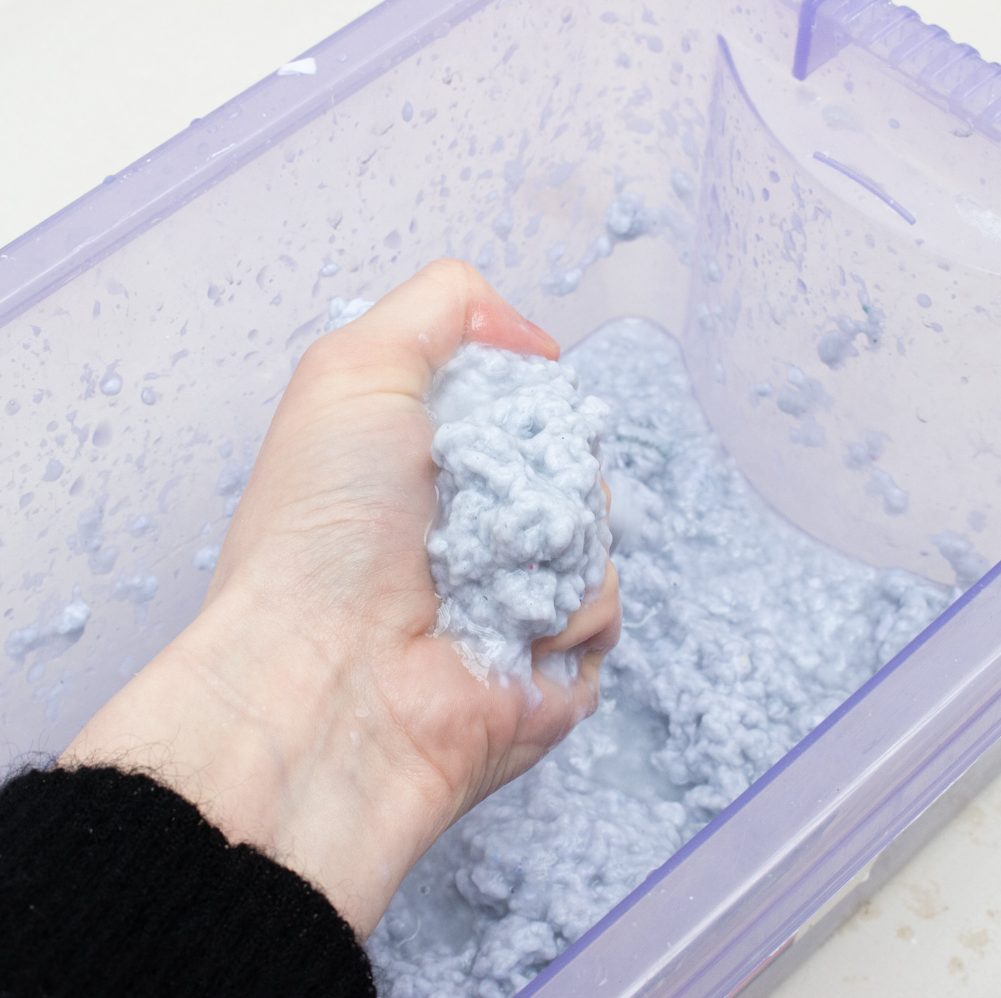
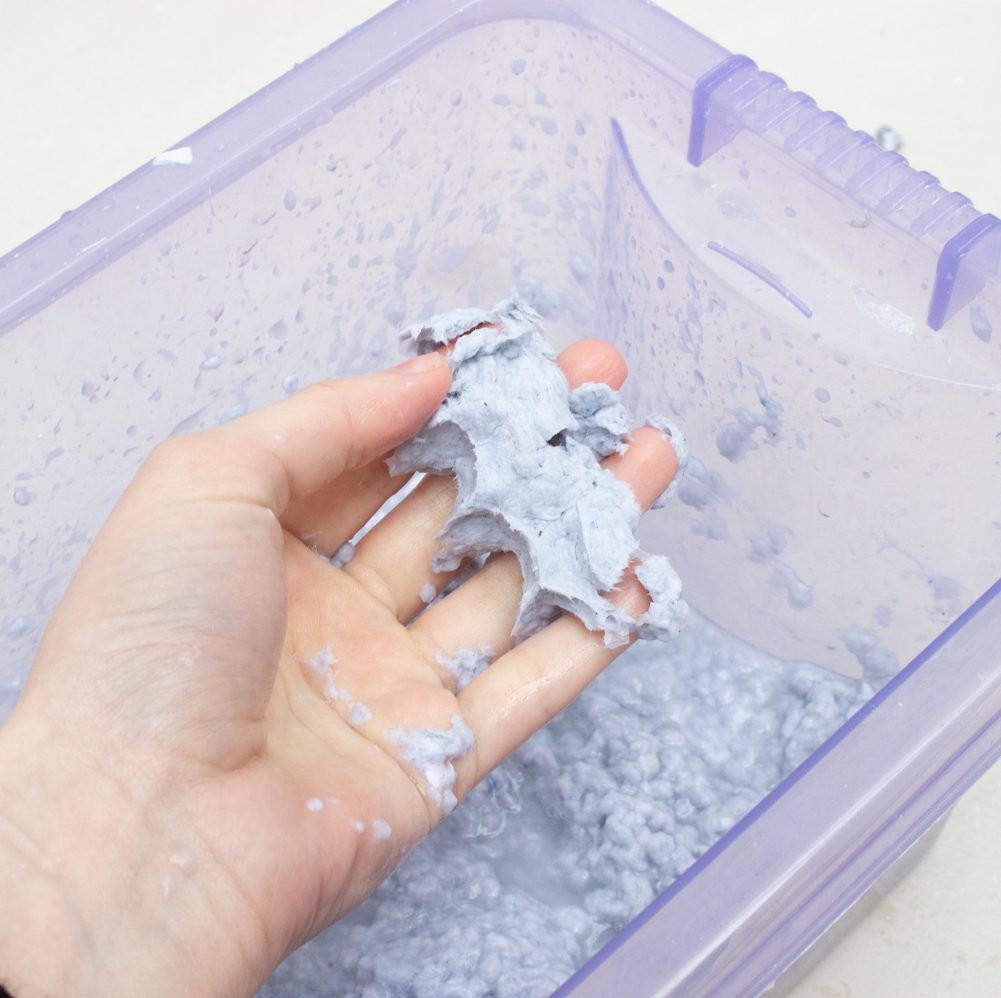
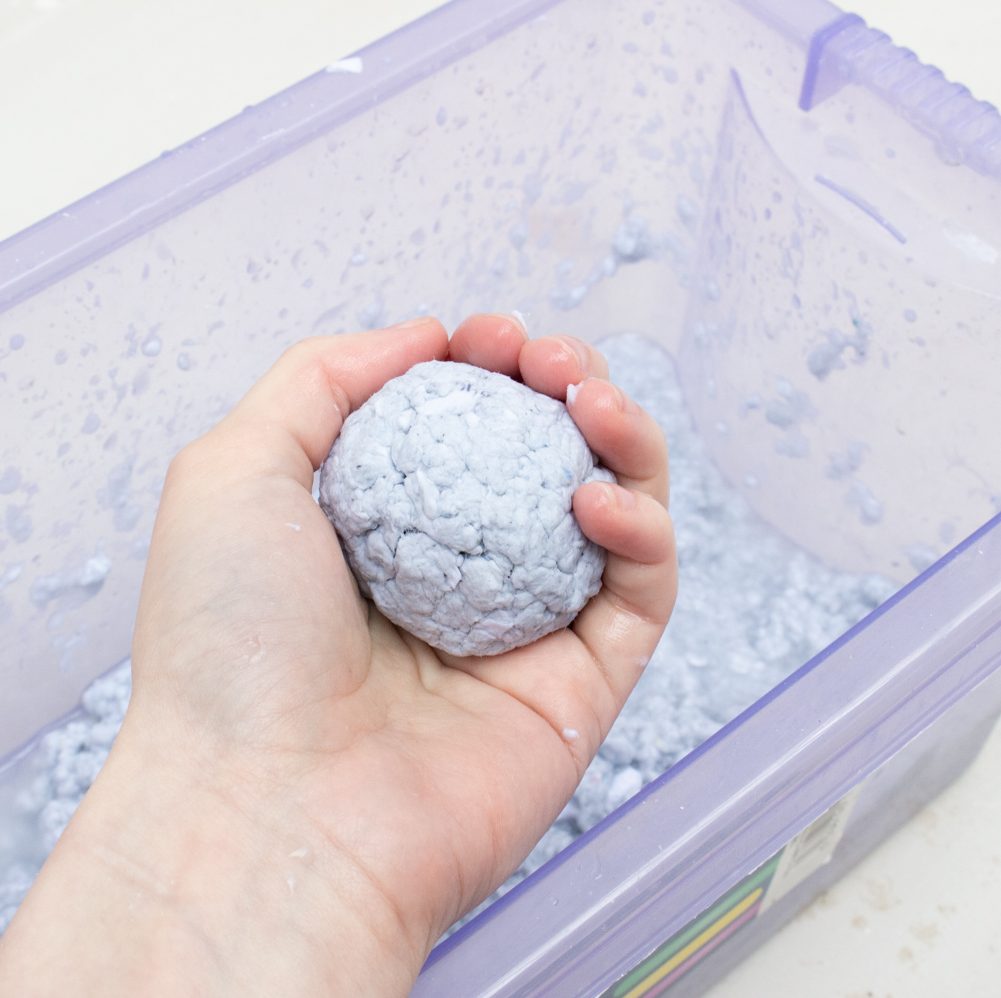
Step 5: Make all the shapes you need for your sculpture. Then leave for 1 to 2 days to dry before decorating.
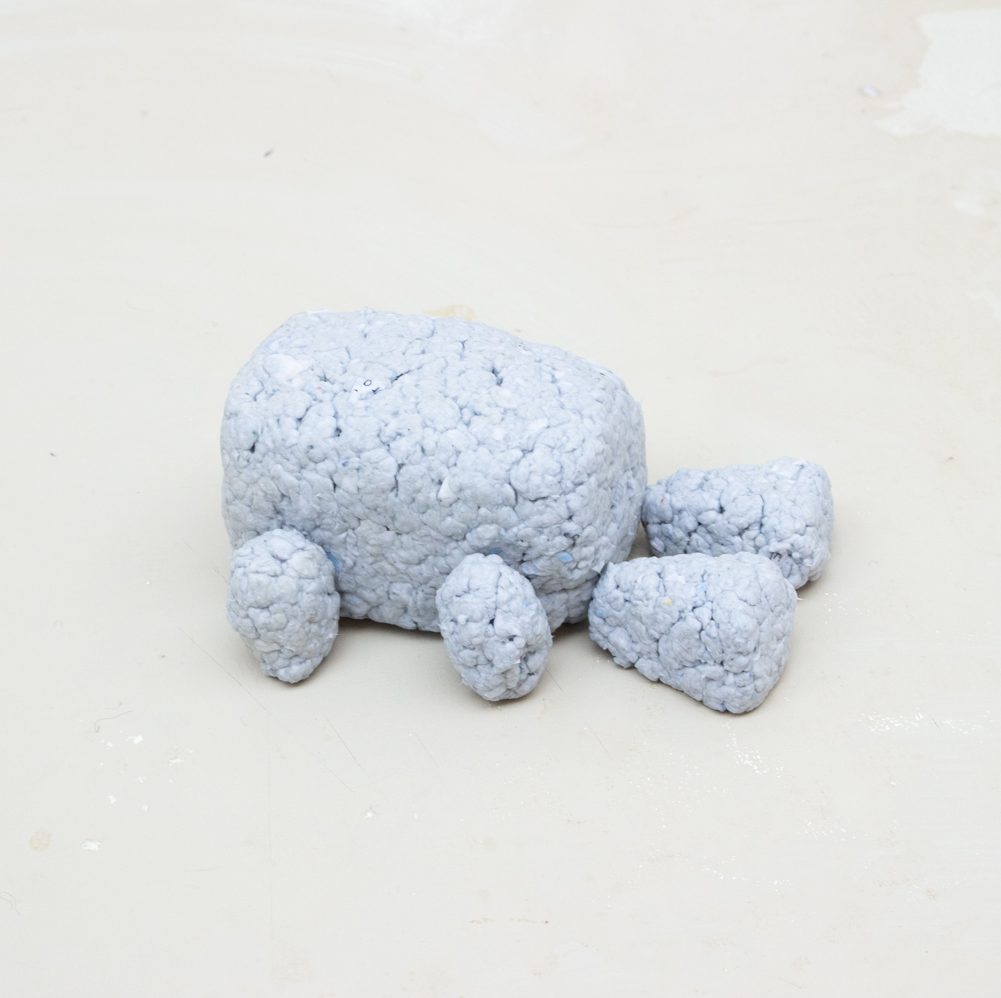
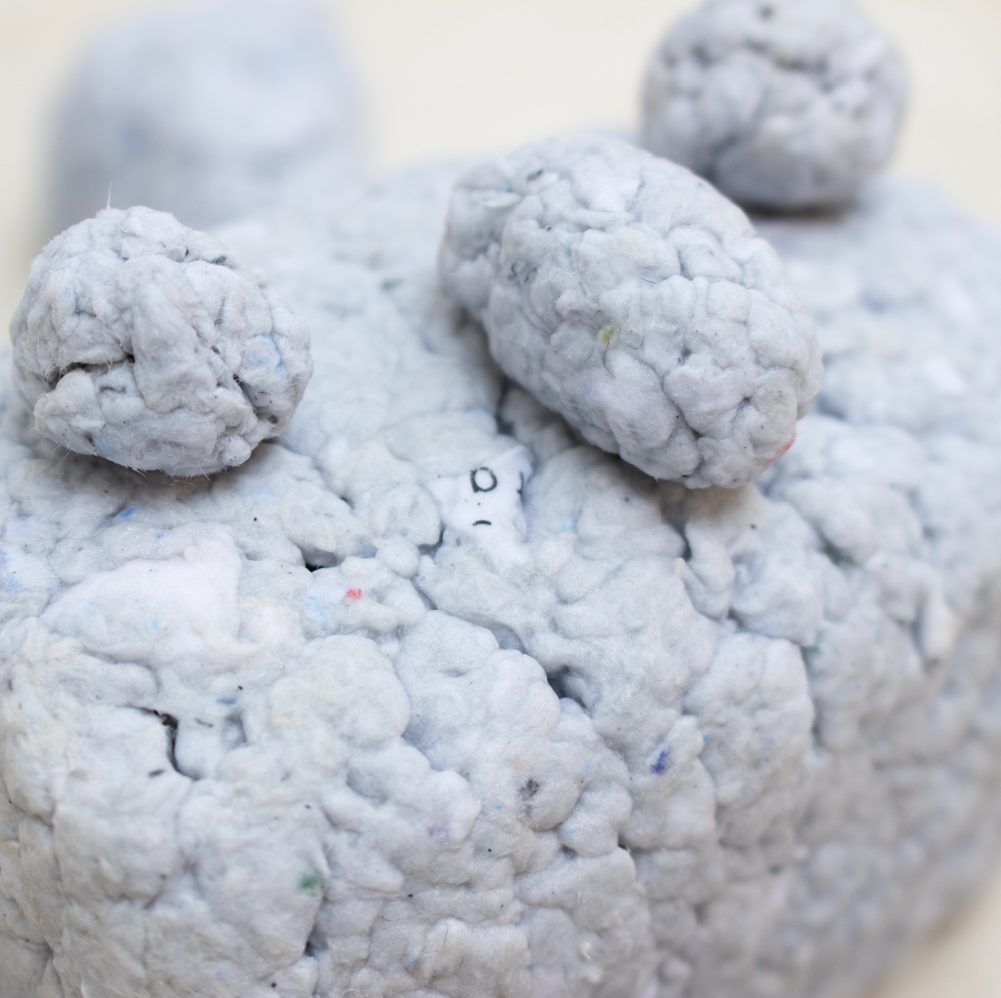
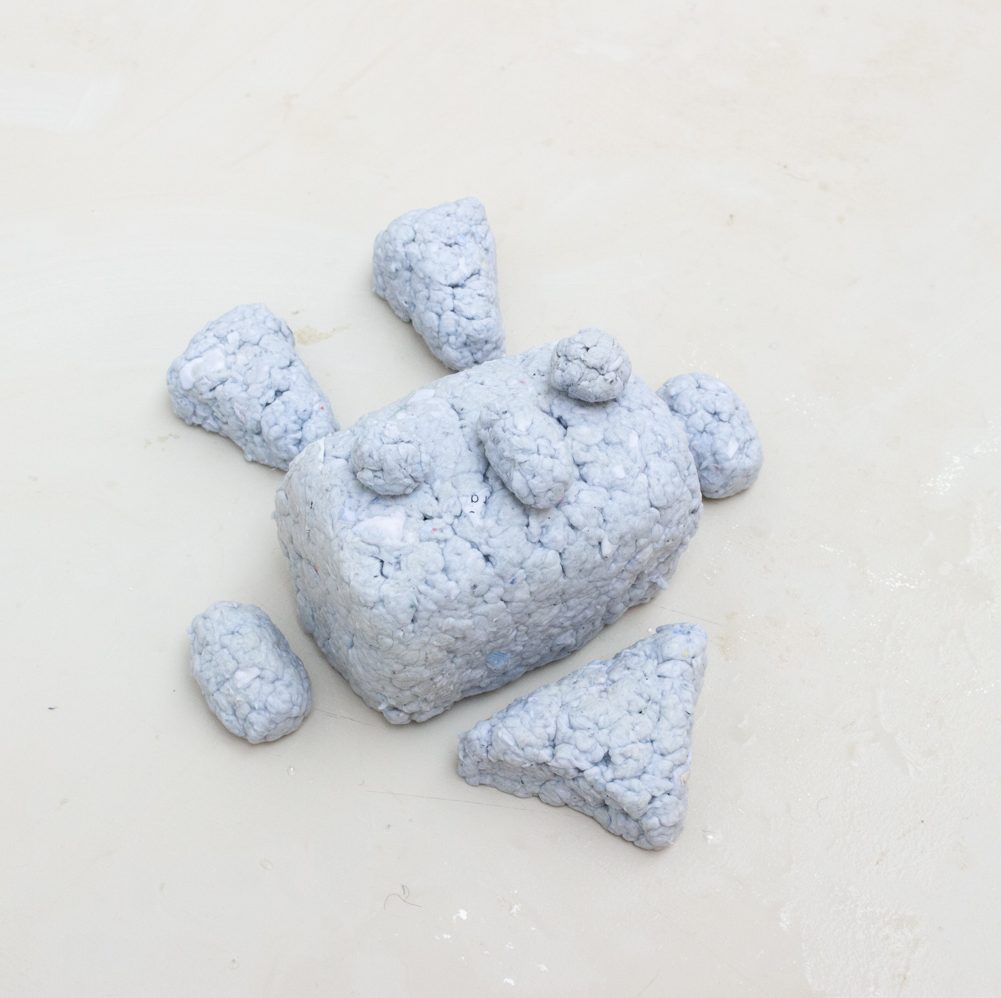
Step 6: Now we can begin to paint our constructed shape. You could paint it to match your original 2D picture or try to see what new colours work – it’s up to you!
Our objects have been transformed from 2D geometric shapes to 3D sculptures.
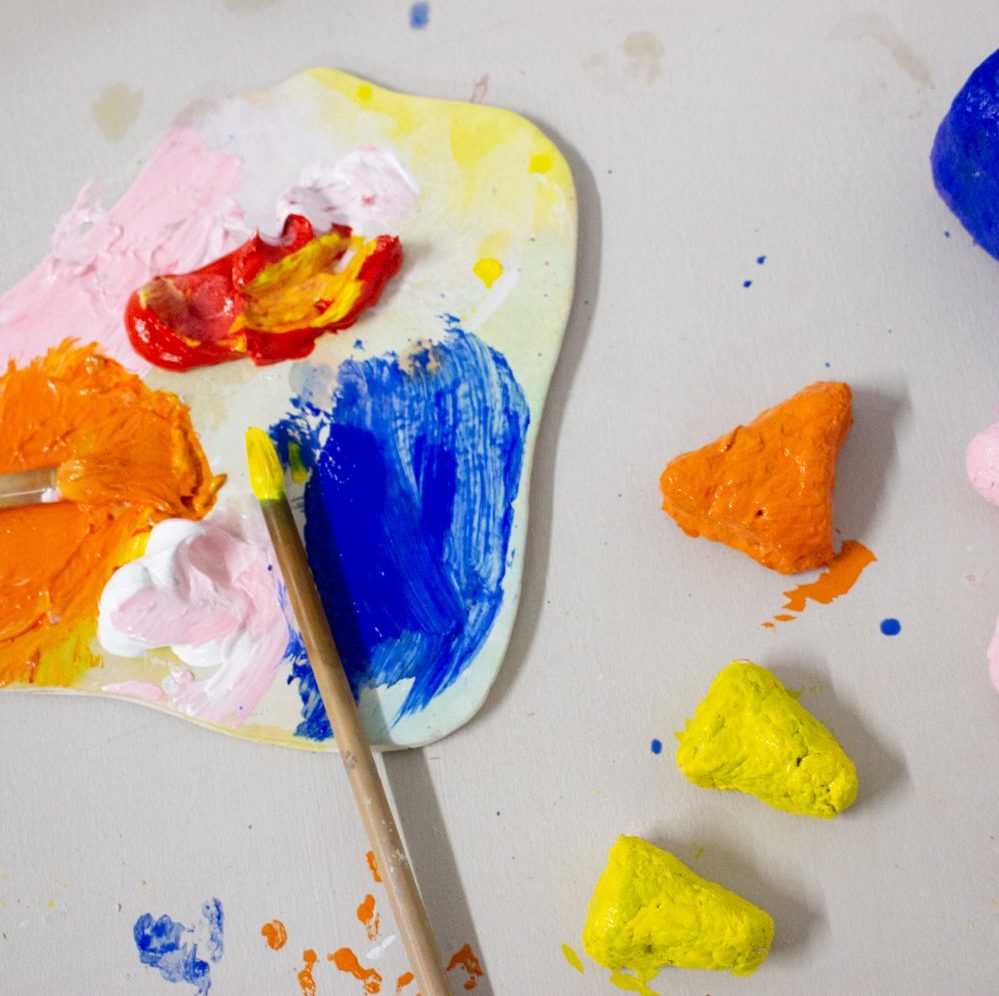
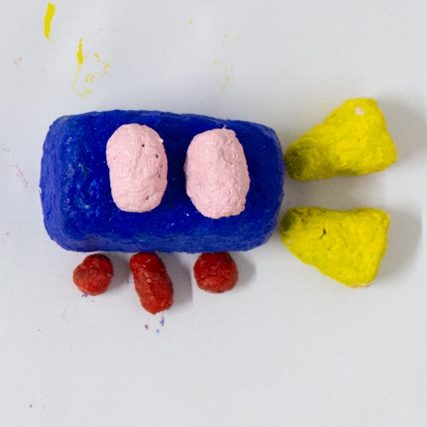
Further steps: You can secure with adhesive putty or PVA glue. In the future, you can re-soak your object again and transform it into something new!
Share what you create with us by tagging @MuseumChildhood.
And don’t forget that the V&A Museum of Childhood is currently closed, but you can keep in touch by signing up to our newsletter.
